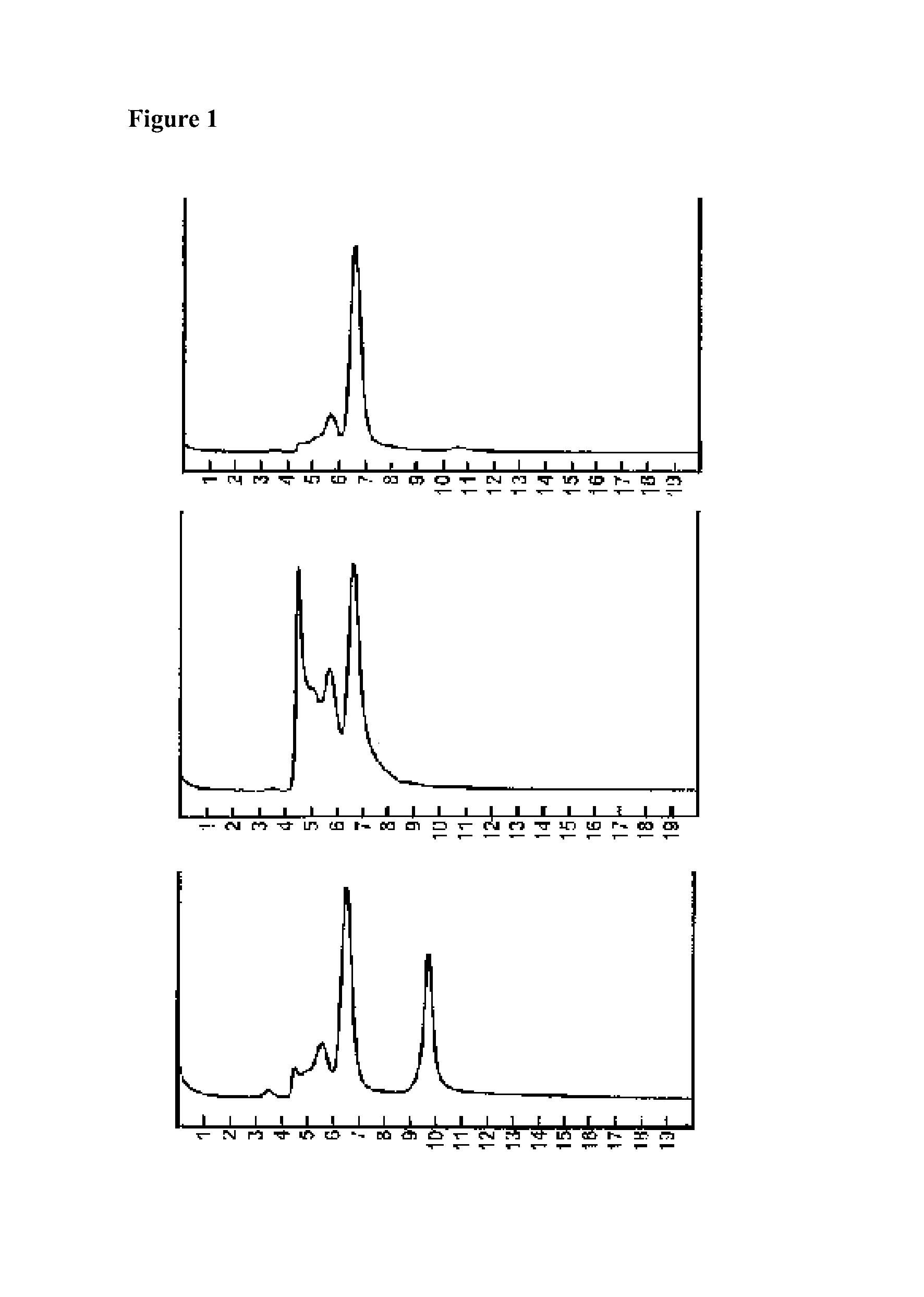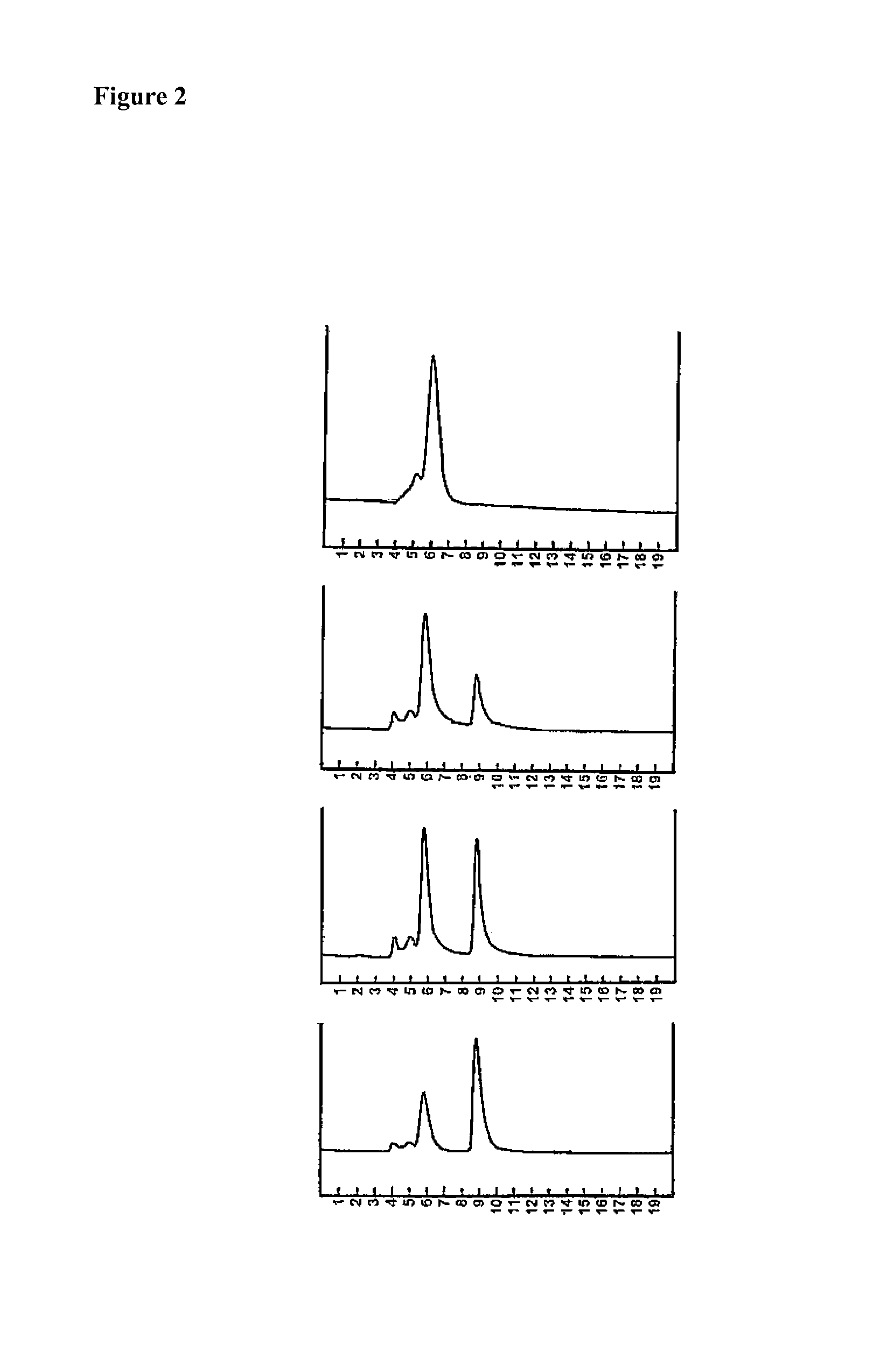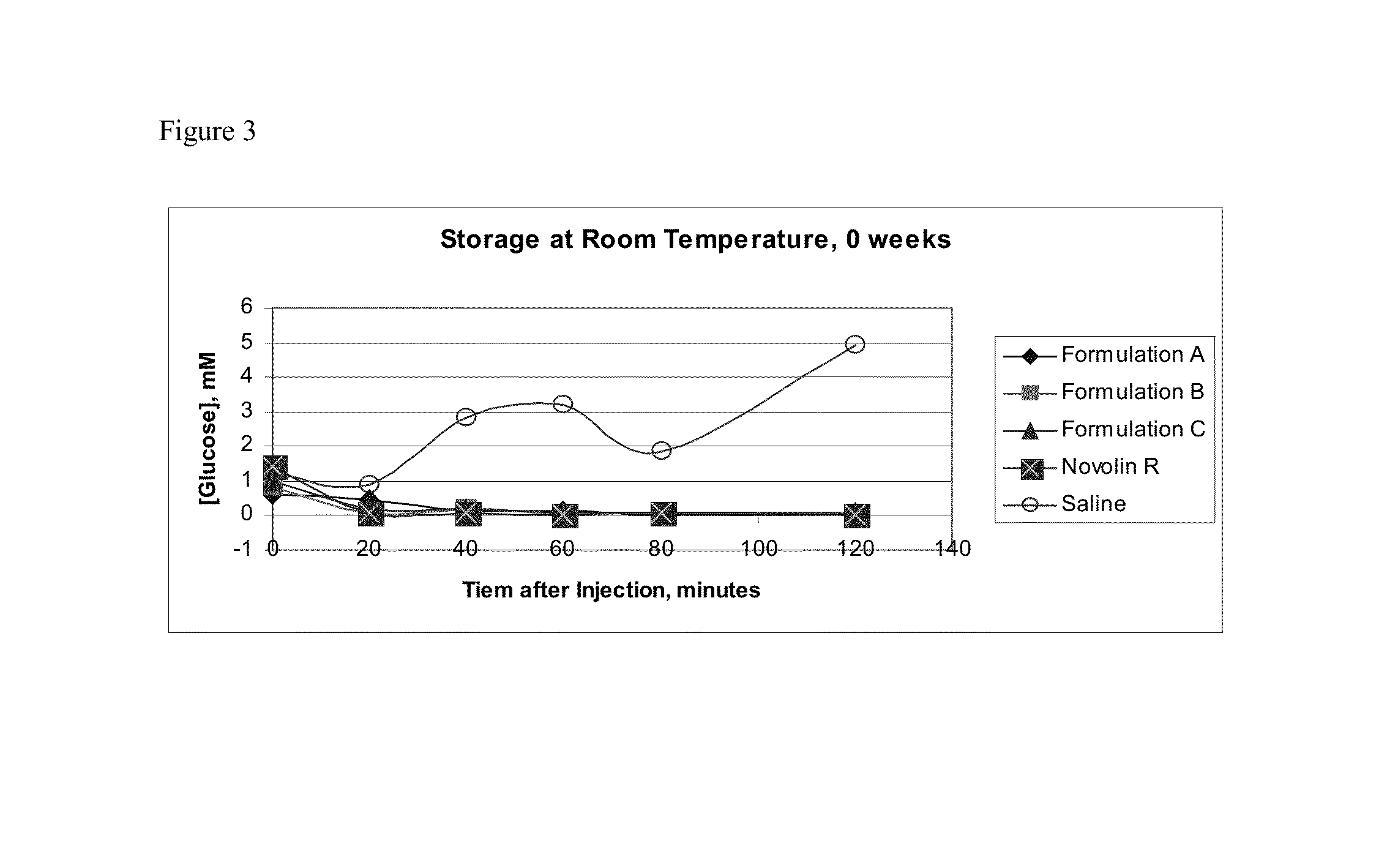Excipients for protein stabilization
a protein and stabilizer technology, applied in the direction of aerosol delivery, drug compositions, metabolic disorders, etc., can solve the problems of reducing the biological activity of the protein, not being practical for most proteins,
- Summary
- Abstract
- Description
- Claims
- Application Information
AI Technical Summary
Benefits of technology
Problems solved by technology
Method used
Image
Examples
example 1
Inhibition of Thermal Aggregation of Bovine Serum Albumin (BSA)
[0055]A 0.050 ml of BSA stock solution (35%, in water, 0.85% sodium chloride, from Sigma) was diluted into 0.450 ml of sodium phosphate buffer (50 mM, pH 7.4, 0.85% sodium chloride) to give a BSA solution at concentration of 35 mg / ml. An excipient, 2-formylbenzenesulfonic acid, sodium salt (Aldrich, 75%), was made into a solution in water (HPLC grade) at concentration of 75 mg / ml, and its pH was adjusted to 8 using dilute hydrochloric acid.
[0056]An aliquot of 0.050 ml of the above stock BSA solution (35 mg / ml) was diluted into PBS buffer (pH 7.4, 0.80 ml), and 0.15 ml of the excipient solution was added to it to make a BSA concentration of 1.75 mg / ml, and the excipient of 11.25 mg / ml. A separate sample was prepared without the addition of the excipient. Both samples in capped glass tubes are incubated at 65° C. At intervals of 0, 40 minutes, aliquots are withdrawn for HPLC analysis on size exclusion chromatography (SEC) ...
example 2
Reduction of Aggregation of BSA Induced by Methanol
[0057]BSA stock solution (0.050 ml, 35%, 0.85% sodium chloride, Sigma) was diluted with 0.050 ml of sodium phosphate buffer (50 mM, pH 7.4, no sodium chloride) and 0.050 ml of water (HPLC grade). A separate sample was prepared in the same way, but replacing the 0.050 ml of water using 0.050 ml of an excipient solution containing pyridoxal phosphate (represented as X2 in FIG. 1, 100 mg / ml in water, pH 7.4). To each of the two samples in test tubes were added 0.350 ml of an aqueous solution of polyethylene glycol (molecular weight 3400, 75%) to turn the mixtures cloudy, followed by addition of 0.50 ml of methanol (HPLC grade). Then the samples were centrifuged to collect the precipitates. The precipitates were re-dissolved in PBS buffer and analyzed on Size Exclusion Chromatography HPLC. Without excipient, about two thirds of BSA was found in the form of aggregates, while only a quarter of BSA appeared as aggregate in the samples usin...
example 3
Reduction of Aggregation of BSA Induced by t-Butanol
[0058]To three separate test tubes containing 0.050 ml of BSA (35%, 0.85% sodium chloride) and 0.050 ml of phosphate buffer (50 mM, pH 7.4), were respectively added 0.010 ml of water, 0.010 mll of 2-formylbenzenesulfonic acid sodium salt (75 mg / ml, pH 8), and 0.010 ml of pyridoxal phosphate (100 mg / ml, pH 7.4). To each of the three tubes were then added 0.50 ml of PEG solution (75%, molecular weight 3400) followed by centrifugation to give some precipitate. The three supernatants were collected to have BSA at saturated concentrations, and to them were separately added 0.50 ml of t-butanol to have more BSA precipitates after centrifugation. The crops of precipitates from t-butanol were washed with t-butanol twice (0.75 ml each) and re-dissolved in PBS buffer (50 mM sodium phosphate, pH 7.4, 0.85% sodium chloride) for SEC HPLC analysis. Plain BSA produced about 75% of aggregates, the sample with 2-formylbenzenesulfonic acid produced ...
PUM
| Property | Measurement | Unit |
|---|---|---|
| pH | aaaaa | aaaaa |
| concentration | aaaaa | aaaaa |
| concentration | aaaaa | aaaaa |
Abstract
Description
Claims
Application Information
 Login to View More
Login to View More - R&D
- Intellectual Property
- Life Sciences
- Materials
- Tech Scout
- Unparalleled Data Quality
- Higher Quality Content
- 60% Fewer Hallucinations
Browse by: Latest US Patents, China's latest patents, Technical Efficacy Thesaurus, Application Domain, Technology Topic, Popular Technical Reports.
© 2025 PatSnap. All rights reserved.Legal|Privacy policy|Modern Slavery Act Transparency Statement|Sitemap|About US| Contact US: help@patsnap.com



